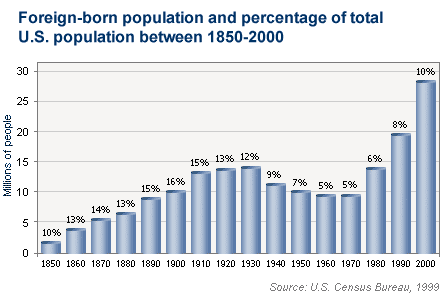Why Study Refugees?
Refugees represent a constituency of the worldwide immigrant population that has grown to unprecedented numbers since the end of World War II. The rise of the global economy, the boom in population due to higher fertility and improved mortality, and the persistence of war have yielded large-scale migration, both within nations and across borders. <1>
The United Nations estimates that 1 in every 35 people is an international migrant. In developed countries that estimate jumps to 1 in 10. <2>
The U.S., by far the largest receiver of international migrants, is currently amidst its second large wave of mass immigration. The first wave, the European one, lasted for a thirty year period between 1890 and 1920. The current one, comprising mainly migrants from Asia and Latin America, has well-surpassed the first one in scale and will have far-reaching effects on the society. Immigration is one of the largest issues U.S. policy-makers must face in the coming decades.
 |
Data source US Census Bureau. Image source msn.com |
However, refugees are distinguished from economic migrants by two factors. First, refugees were forcibly pushed out of their home country by factors beyond their control. Second, once they arrive in the U.S., an elaborate public-private-non-profit system assists in their resettlement. Various federal, state, municipal, and voluntary agencies all combine forces to assimilate refugees; to study refugee service programs is to study highly prescriptive methods of social engineering.
As the immigrant population continues to swell, especially in our smaller cities, there are larger lessons to be taken from refugee community development programs and projects. In the future such programs might be expanded to serve other marginalized and culturally isolated groups in the American society or they may be community development tools for places beyond the U.S.
=====
<1> Mary C. Waters and Reed Ueda, eds, New American: A Guide to Immigration since 1965 (Cambridge, MA: Harvard University Press, 2007), 2
<2> Ibid.